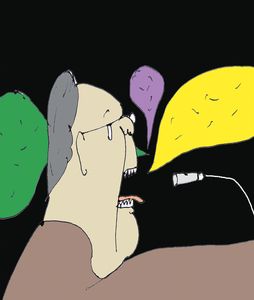In the old days, Bob Woodward’s book Fear: Trump in the White House would have been in danger of being called out for promoting obscenity. The account of little more than one year of the colourful president is full of direct quotes of Trump, his ministers, lawyers and officials, including four- to 12-letter-long swear words. Woodward, who was responsible (with fellow reporter Carl Bernstein) for the fall of president Richard Nixon in the 1970s, is not new to the use of bad words, as Nixon freely used them in the White House, which was revealed in the thousands of tapes recorded by Nixon himself. But there was a respite in the later presidencies, from Gerald Ford to Barack Obama. In Trump’s White House, however, the f-word tumbles out frequently, as recorded by Woodward and other chroniclers, even in meetings of cabinet ministers with the president. There is no reverence even to heads of foreign governments, women of substance or respected figures of American establishment. In an earlier era of book publishing, they would have been edited out or marked with asterisk, like in f***.
Compared to the office and cabinet of the world’s most powerful man, there is far better decorum at the highest levels of the Indian government. Even ministers with rustic or rowdy backgrounds quickly learn to control their language, often muttering obscenities under breath. Prime ministers who may be combative in public rallies use refined language in the confines of cabinet rooms and offices, thereby setting an example. Even politicians like Lalu Prasad of the Rashtriya Janata Dal or Kalpnath Rai of the Congress, known for their use of colourful language in public, have been subdued in the presence of fellow ministers and senior bureaucrats. Though they do get angry, political leaders are careful to use expressions that convey their frustration, anger or disgust.
But, when ministers are really angry, they do use curse words. That is what happened after the Babri Masjid demolition in December 1992. Many Congress ministers were livid at prime minister P.V. Narasimha Rao and home minister S.B. Chavan for their failure to protect the monument and also for trusting the BJP’s Kalyan Singh, who was Uttar Pradesh chief minister. At the first cabinet meeting called by Rao, his detractors like Arjun Singh, C.K. Jaffer Sharief and M.L. Fotedar raved at him. Health minister Fotedar, a close aide of Indira Gandhi, let loose a volley of personal abuse at the prime minister, questioning his manhood. Rao heard him in silence, until other ministers rebutted and pacified Fotedar. But Fotedar was soon dropped (he insisted he had resigned) from the cabinet and later, along with Arjun Singh, he revolted against Rao.
Another person who regularly lost his cool was Kalpnath Rai, a strongman from eastern Uttar Pradesh. When he was power minister, he had called the cabinet secretary chaprasi (peon). In Manmohan Singh’s government, several ministers used the s*** word a lot. In Narendra Modi’s government, Nitin Gadkari sometimes slips into colloquial Hindi, but avoids the tabooed words.
Apart from the discipline with which most meetings and businesses are conducted, Indian politicians are careful with their language, thanks to their stints in Parliament and assemblies. Use of profane and obscene words is discouraged, and the list of words proscribed and expunged grows every year. On the other hand, neither the US president nor his ministers attend the House of Representatives or Senate. Added to normal candour of American politicians and businessmen, this lack of exposure and answerability to the US Congress on a day-to-day basis makes them freewheeling in their language.
sachi@theweek.in


